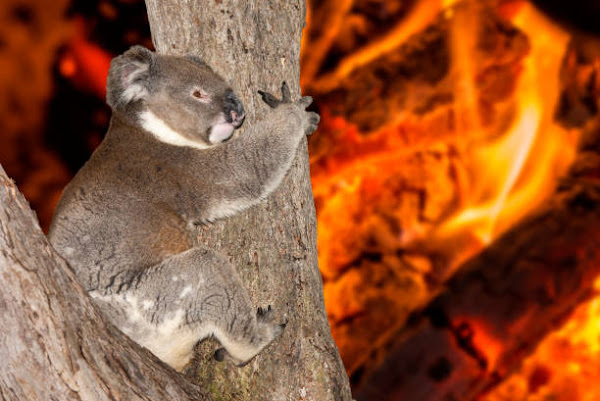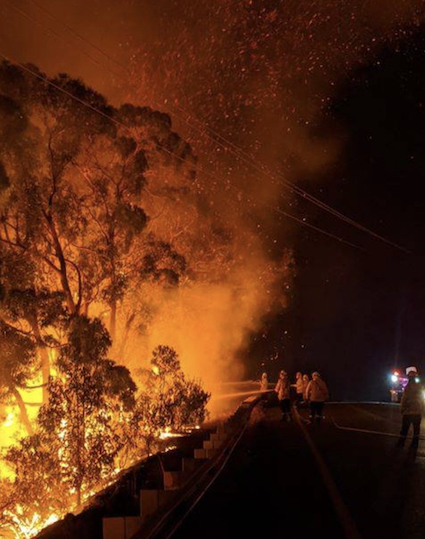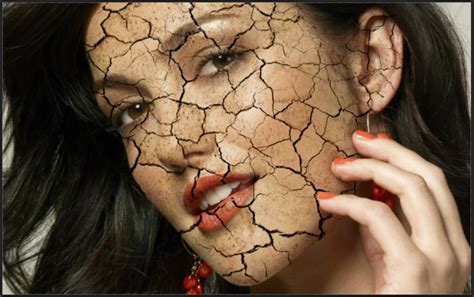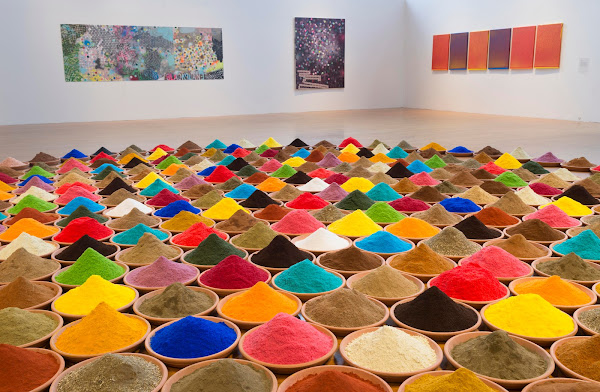Preamble
On this blog spot there are posts that center on my “Wearable Art” (e.g. scarves, digital or analogue created fabric lengths etc.) For your convenience I have listed these posts below.
A Selection of My Scarves
Leaves Transformed: A New Collection of My Digitally Designed Fabrics
My New Silk Rayon Velvet Scarves@Purple Noon Art And Sculpture Gallery
My Fabric Lengths@QSDS
My Fabric Collection:"Oh, Oh Marilyn and Mona!"@Spoonflower
2013 Australian Craft Awards – Finalist
My Scarves@2014 Scarf Festival: "Urban Artscape" Pashminas
My New Scarves and Fabric Lengths
New Range of Silk Neckties - Karma and Akash
AIVA: My New Hand Dyed and Hand Printed Fabric Design
New Colorways For My 'Cultural Graffiti' Fabrics
Byzantine Glow: A New Collection of My Digitally Designed Fabrics
Wall Flower: A New Collection of My Digitally Designed Fabrics
Ink Fern - A New Collection of My Digitally Designed Fabrics
Celebratory Fireworks
My New Silk ArtCloth Scarves
New ‘Unique State’ Silk ArtCloth Scarves
UBIRR - My New Hand Dyed & Printed Fabric Design
Renaissance Man - My New Hand Dyed & Printed Fabric Design
Banksia - My New Hand Dyed and Hand Printed Fabric Design
Ginkgo Love - My New Hand Dyed and Hand Printed Fabric Design
Garden Delights I & II - My New Hand Dyed and Hand Printed Fabric Design
Wallflower III - My New Hand Dyed and Hand Printed Fabric Design
Rainforest Beauty - Collection My New Hand Dyed and Hand Printed Fabric Design
Spring & Autumn Flurry Collection - My New Hand Dyed and Hand Printed Fabric Design
La Volute Collection - My New Hand Dyed and Hand Printed Fabric Design
Urban Butterfly - My New Hand Printed Fabric Design
Acanthus Dream - My New Hand Printed Fabric Design
“Cascading Acanthus” - My New Hand Dyed and Hand Printed Fabric Design
My New Hand Dyed and Hand Printed 'Rainforest Beauty' Pashmina Wraps Collection
My ArtCloth Tea Towels: A New Collection of Digitally Designed Products
Through the Land it Roared . . . ArtCloth Shawl
My New Hand Dyed and Hand Printed ‘Urban Codes - Series 1’ Collection
Urban Moonlight - My Post Graffiti Doily
My New Hand Printed Fabric Design - "Morocco" ArtCloth
‘Vine Glow’
“Bush Banksia’s” Collection"
Releasing My New - ‘Unique State’ ArtCloth Scarves
‘LRSP’ A New Collection of Digitally Designed ArtCloth Textiles
If you like any of my artworks in the above links, please email me at - Marie-Therese - for pricing and for any other enquiries.
Introduction
There are three basic ingredients (as opposed to definitions) that all artworks possess; (i) they need to be “engaged”; (ii) they are non-functional; (iii) they are aesthetic. Wearable Art is “Art” when placed in an art context but when it is not placed in an art context, its functionality obscures the act of engagement. My "Through the Land it Roared . . ." large shawl is a wearable art item.
Concept and Processes
During 2019 to 2020 the ferocity of the Australian bushfires drew international attention. Anthropogenic climate change has and will determine which flora and fauna will survive and which will eventually become extinct.
An Australian Koala trying to survive a horrific bush fire.
In 2019 the Newcastle Printmakers Workshop in Newcastle, NSW, Australia celebrated 40 years as the oldest community access printmaking workshop in Australia!
Forty current and past NPW printmakers were engaged and selected to celebrate this 40 year milestone anniversary. Each participating artist was randomly assigned a year that spanned the history of the workshop in order to act as a base for the concept of their artwork. Works could focus on global, local or personal interpretations. Each printmaker created an edition of 12 prints with a maximum print size of 28 x 28 cm.
My given year was 2005. I based my art print on the fruits of my research which centered on the devastating effects that Hurricane Katrina caused on the City of New Orleans. My print was titled: ‘Hurricane Katrina - The Disruptor.’
Note: For futher information about this artwork click on the following link - Hurricane Katrina - in order to view my contribution. My print, as well as the other 39 exceptional prints, were exhibited at the 2019 ’40/40’ NPW celebratory anniversary exhibition at Art Systems Wickham Gallery, Newcastle, NSW, between the 8th - 24th November 2019.
The ’40/40’ exhibition opening was held on Saturday, 9 November 2019 from 4 - 6pm and thereafter the participating artists and guests celebrated this special occasion with much merriment and memories at the beautiful Marina Views Function Centre and Restaurant. A good time was had by all!
On that very day, the 9 November 2019, my husband, Ellak, and I were getting ready to attend the exhibition opening and dinner. It was a hot, dry and windy day when an attack of glowing, hot, fire embers started blowing over our bushland area and homes in Wangi Wangi and Arcadia Vale, suburbs in Lake Macquarie, which were near to our home. It created small spot fires well ahead of a fire front. It came suddenly near our door step without warning!
Image of firefighters from the Peninsula RFS Brigade battling the fire on Wangi Road, Arcadia Vale, Lake Macquarie, NSW.
Photograph courtesy of Chris Mason.
My husband decided there and then that he would not attend the exhibition and dinner as there was a lot at stake and insisted that I should attend. Our dog, Kira, could smell the smoke and was terribly nervous. Our neighbors had left earlier that day and their mother was home worried, not knowing what to do. My husband went to the neighbors and helped her hose down their home. He then came back to hose down our home and to help others who needed assistance in the street while the fire brigade attended to the fire at large some 400 metres from our place. Knowing that a garden hose was no match for spot fires and excessive ember attacks, along with others, he organised for all who could, to leave the area if conditions worsened. They would assemble at the local club which was close to the lake to seek refuge, and if further threatened by the fire storm, swim and seek refuge on boats that were moored nearby.
Firefighters battling the blaze off Wangi Road, Arcadia Vale, Lake Macquarie, NSW.
Photograph courtesy of Wallarah Rural Fire Brigade.
After a harrowing day of working fiercely and tirelessly protecting their homes and neighbors, the local community were advised that the fires were being extinguished by the fire crews and would be listed at an "Advice level".
Burnt signage at the top of the main intersection of Wangi Road and our street, Donnelly Road, Arcadia Vale, Lake Macquarie, NSW. The signage is only 300 meters from our home.
I raced home after the dinner to find my husband covered in soot and smoke, our dog Kira relieved that the events of the day had settled down somewhat. Fortunately the escape strategy was not needed! No-one slept easily that night since the lingering smoke that filled the air was acrid!
This was the fifth time we had experienced a fire event in our local area of Arcadia Vale and Wangi Wangi since we moved here in 1988. We hope that it might be the last. A most devasting, emotional and terrifying experience for anyone – be it humans, pets, flora and fauna - to be exposed to a fierce threat. In Australia and elsewhere many suffered great losses and hardships in the fire storms of 2019 and 2020 due to the effects of anthropogenic climate change.
For those who are familiar with my art practice, my passion for the natural world has created bodies of work examining anthropogenic climate change and the human designed environments we inhabit for the last two decades. These installations and individual artworks have been exhibited widely - internationally, nationally and locally. My written articles (including my artworks) on the subject have been published in numerous refereed journals, magazines, books, websites and blogspots.
To preserve the memory of fragile native species, such as the rainforest dogwood plant, I employed numerous traditional surface design and hand printing techniques to showcase the beauty and vulnerability of the flora and fauna to climate change within a unique and timeless aesthetic.
I employed a rayon shawl as a medium to represent the personal items and memories that make up our lives and homes, and which are/can be subsequently lost in a fire storm event.
As with all my textile art and designs, they start as a plain white fabrics (in this case a white rayon shawl). The shawl was individually dyed and overdyed using time-honored hand dyeing techniques to add visual depth, pattern and contrast to the background of the piece. Using time-honored hand printing processes, the shawl was then screen-printed with images of common dogwood over the entire piece in multiple layers. Paints were carefully mixed to ensure that the screen-printed images imparted rich, luscious, intense smokey colors to the multi dyed base colors. Layers of complex images were overprinted using glazes, transparent, opaque, and metallic pigments until a richly hued and multi layered surface was created reflecting the intensity of bushfires.
Technique and Media
Shibori dyed in light orange, shibori overdyed in red, shibori overdyed in black, screen-printed employing glazes, transparent, opaque, and metallic pigments on a rayon shawl.
Size
Shawl measures 1.9 meters in width x 1.15 meters in length.
Through the Land it Roared . . .
Shawl photographs below courtesy of Marie-Therese Wisniowski (in other words - me!)
Full front view of the ArtCloth shawl, 'Through the Land it Roared . . .'
Full back view of the ArtCloth shawl, 'Through the Land it Roared . . .'
Detail front view of the ArtCloth shawl, 'Through the Land it Roared . . .'
Detail view of the printed native rainforest dogwood plant.
Detail view of the printed native rainforest dogwood plant catapulting through the intense fire storm blaze.
Detail view of shibori patterned background reflecting the movement of hot air and gusty winds.
Detail view of shibori patterned background and smokey colors in the piece.
Detail view of shibori patterned background and more intense smokey colors in the piece.
Detail view of shibori patterned background and intense burning flames colors in the piece.
On this blog spot there are posts that center on my “Wearable Art” (e.g. scarves, digital or analogue created fabric lengths etc.) For your convenience I have listed these posts below.
A Selection of My Scarves
Leaves Transformed: A New Collection of My Digitally Designed Fabrics
My New Silk Rayon Velvet Scarves@Purple Noon Art And Sculpture Gallery
My Fabric Lengths@QSDS
My Fabric Collection:"Oh, Oh Marilyn and Mona!"@Spoonflower
2013 Australian Craft Awards – Finalist
My Scarves@2014 Scarf Festival: "Urban Artscape" Pashminas
My New Scarves and Fabric Lengths
New Range of Silk Neckties - Karma and Akash
AIVA: My New Hand Dyed and Hand Printed Fabric Design
New Colorways For My 'Cultural Graffiti' Fabrics
Byzantine Glow: A New Collection of My Digitally Designed Fabrics
Wall Flower: A New Collection of My Digitally Designed Fabrics
Ink Fern - A New Collection of My Digitally Designed Fabrics
Celebratory Fireworks
My New Silk ArtCloth Scarves
New ‘Unique State’ Silk ArtCloth Scarves
UBIRR - My New Hand Dyed & Printed Fabric Design
Renaissance Man - My New Hand Dyed & Printed Fabric Design
Banksia - My New Hand Dyed and Hand Printed Fabric Design
Ginkgo Love - My New Hand Dyed and Hand Printed Fabric Design
Garden Delights I & II - My New Hand Dyed and Hand Printed Fabric Design
Wallflower III - My New Hand Dyed and Hand Printed Fabric Design
Rainforest Beauty - Collection My New Hand Dyed and Hand Printed Fabric Design
Spring & Autumn Flurry Collection - My New Hand Dyed and Hand Printed Fabric Design
La Volute Collection - My New Hand Dyed and Hand Printed Fabric Design
Urban Butterfly - My New Hand Printed Fabric Design
Acanthus Dream - My New Hand Printed Fabric Design
“Cascading Acanthus” - My New Hand Dyed and Hand Printed Fabric Design
My New Hand Dyed and Hand Printed 'Rainforest Beauty' Pashmina Wraps Collection
My ArtCloth Tea Towels: A New Collection of Digitally Designed Products
Through the Land it Roared . . . ArtCloth Shawl
My New Hand Dyed and Hand Printed ‘Urban Codes - Series 1’ Collection
Urban Moonlight - My Post Graffiti Doily
My New Hand Printed Fabric Design - "Morocco" ArtCloth
‘Vine Glow’
“Bush Banksia’s” Collection"
Releasing My New - ‘Unique State’ ArtCloth Scarves
‘LRSP’ A New Collection of Digitally Designed ArtCloth Textiles
If you like any of my artworks in the above links, please email me at - Marie-Therese - for pricing and for any other enquiries.
Introduction
There are three basic ingredients (as opposed to definitions) that all artworks possess; (i) they need to be “engaged”; (ii) they are non-functional; (iii) they are aesthetic. Wearable Art is “Art” when placed in an art context but when it is not placed in an art context, its functionality obscures the act of engagement. My "Through the Land it Roared . . ." large shawl is a wearable art item.
Concept and Processes
During 2019 to 2020 the ferocity of the Australian bushfires drew international attention. Anthropogenic climate change has and will determine which flora and fauna will survive and which will eventually become extinct.
An Australian Koala trying to survive a horrific bush fire.
In 2019 the Newcastle Printmakers Workshop in Newcastle, NSW, Australia celebrated 40 years as the oldest community access printmaking workshop in Australia!
Forty current and past NPW printmakers were engaged and selected to celebrate this 40 year milestone anniversary. Each participating artist was randomly assigned a year that spanned the history of the workshop in order to act as a base for the concept of their artwork. Works could focus on global, local or personal interpretations. Each printmaker created an edition of 12 prints with a maximum print size of 28 x 28 cm.
My given year was 2005. I based my art print on the fruits of my research which centered on the devastating effects that Hurricane Katrina caused on the City of New Orleans. My print was titled: ‘Hurricane Katrina - The Disruptor.’
Note: For futher information about this artwork click on the following link - Hurricane Katrina - in order to view my contribution. My print, as well as the other 39 exceptional prints, were exhibited at the 2019 ’40/40’ NPW celebratory anniversary exhibition at Art Systems Wickham Gallery, Newcastle, NSW, between the 8th - 24th November 2019.
The ’40/40’ exhibition opening was held on Saturday, 9 November 2019 from 4 - 6pm and thereafter the participating artists and guests celebrated this special occasion with much merriment and memories at the beautiful Marina Views Function Centre and Restaurant. A good time was had by all!
On that very day, the 9 November 2019, my husband, Ellak, and I were getting ready to attend the exhibition opening and dinner. It was a hot, dry and windy day when an attack of glowing, hot, fire embers started blowing over our bushland area and homes in Wangi Wangi and Arcadia Vale, suburbs in Lake Macquarie, which were near to our home. It created small spot fires well ahead of a fire front. It came suddenly near our door step without warning!
Image of firefighters from the Peninsula RFS Brigade battling the fire on Wangi Road, Arcadia Vale, Lake Macquarie, NSW.
Photograph courtesy of Chris Mason.
My husband decided there and then that he would not attend the exhibition and dinner as there was a lot at stake and insisted that I should attend. Our dog, Kira, could smell the smoke and was terribly nervous. Our neighbors had left earlier that day and their mother was home worried, not knowing what to do. My husband went to the neighbors and helped her hose down their home. He then came back to hose down our home and to help others who needed assistance in the street while the fire brigade attended to the fire at large some 400 metres from our place. Knowing that a garden hose was no match for spot fires and excessive ember attacks, along with others, he organised for all who could, to leave the area if conditions worsened. They would assemble at the local club which was close to the lake to seek refuge, and if further threatened by the fire storm, swim and seek refuge on boats that were moored nearby.
Firefighters battling the blaze off Wangi Road, Arcadia Vale, Lake Macquarie, NSW.
Photograph courtesy of Wallarah Rural Fire Brigade.
After a harrowing day of working fiercely and tirelessly protecting their homes and neighbors, the local community were advised that the fires were being extinguished by the fire crews and would be listed at an "Advice level".
Burnt signage at the top of the main intersection of Wangi Road and our street, Donnelly Road, Arcadia Vale, Lake Macquarie, NSW. The signage is only 300 meters from our home.
I raced home after the dinner to find my husband covered in soot and smoke, our dog Kira relieved that the events of the day had settled down somewhat. Fortunately the escape strategy was not needed! No-one slept easily that night since the lingering smoke that filled the air was acrid!
This was the fifth time we had experienced a fire event in our local area of Arcadia Vale and Wangi Wangi since we moved here in 1988. We hope that it might be the last. A most devasting, emotional and terrifying experience for anyone – be it humans, pets, flora and fauna - to be exposed to a fierce threat. In Australia and elsewhere many suffered great losses and hardships in the fire storms of 2019 and 2020 due to the effects of anthropogenic climate change.
For those who are familiar with my art practice, my passion for the natural world has created bodies of work examining anthropogenic climate change and the human designed environments we inhabit for the last two decades. These installations and individual artworks have been exhibited widely - internationally, nationally and locally. My written articles (including my artworks) on the subject have been published in numerous refereed journals, magazines, books, websites and blogspots.
To preserve the memory of fragile native species, such as the rainforest dogwood plant, I employed numerous traditional surface design and hand printing techniques to showcase the beauty and vulnerability of the flora and fauna to climate change within a unique and timeless aesthetic.
I employed a rayon shawl as a medium to represent the personal items and memories that make up our lives and homes, and which are/can be subsequently lost in a fire storm event.
As with all my textile art and designs, they start as a plain white fabrics (in this case a white rayon shawl). The shawl was individually dyed and overdyed using time-honored hand dyeing techniques to add visual depth, pattern and contrast to the background of the piece. Using time-honored hand printing processes, the shawl was then screen-printed with images of common dogwood over the entire piece in multiple layers. Paints were carefully mixed to ensure that the screen-printed images imparted rich, luscious, intense smokey colors to the multi dyed base colors. Layers of complex images were overprinted using glazes, transparent, opaque, and metallic pigments until a richly hued and multi layered surface was created reflecting the intensity of bushfires.
Technique and Media
Shibori dyed in light orange, shibori overdyed in red, shibori overdyed in black, screen-printed employing glazes, transparent, opaque, and metallic pigments on a rayon shawl.
Size
Shawl measures 1.9 meters in width x 1.15 meters in length.
Through the Land it Roared . . .
Shawl photographs below courtesy of Marie-Therese Wisniowski (in other words - me!)
Full front view of the ArtCloth shawl, 'Through the Land it Roared . . .'
Full back view of the ArtCloth shawl, 'Through the Land it Roared . . .'
Detail front view of the ArtCloth shawl, 'Through the Land it Roared . . .'
Detail view of the printed native rainforest dogwood plant.
Detail view of the printed native rainforest dogwood plant catapulting through the intense fire storm blaze.
Detail view of shibori patterned background reflecting the movement of hot air and gusty winds.
Detail view of shibori patterned background and smokey colors in the piece.
Detail view of shibori patterned background and more intense smokey colors in the piece.
Detail view of shibori patterned background and intense burning flames colors in the piece.



















































